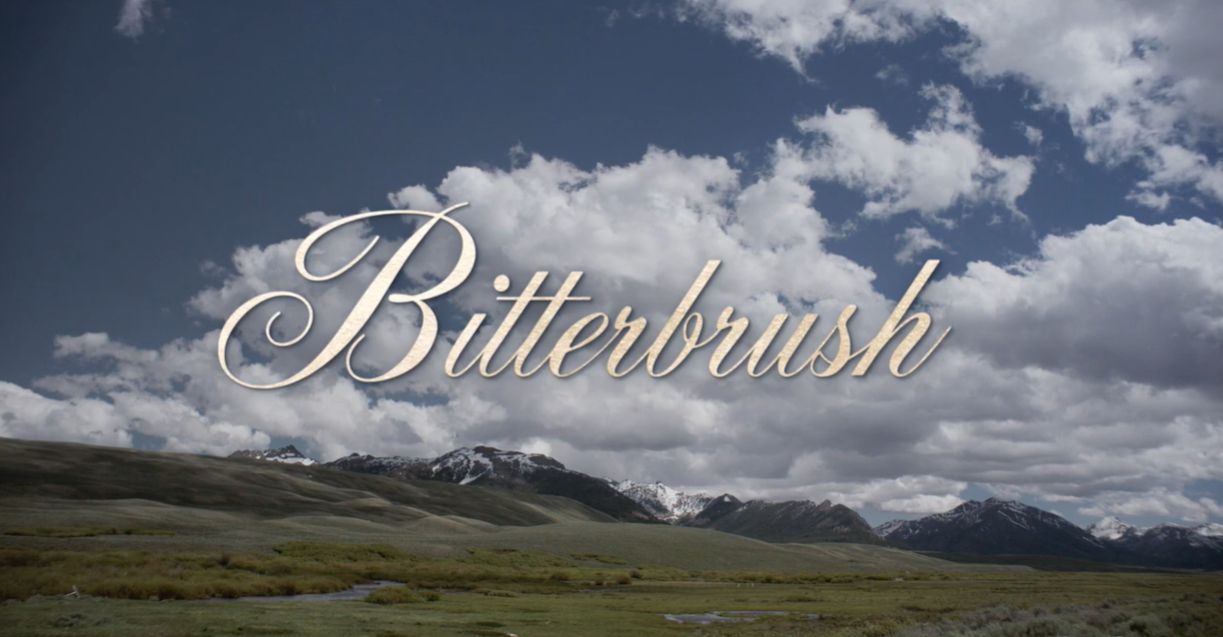Doc Corner: The Cowgirls of 'Bitterbrush'
 Thursday, June 16, 2022 at 6:00PM
Thursday, June 16, 2022 at 6:00PM By Glenn Dunks

Emelie Mahdavian’s first documentary feature was set in Tajikstan. The remote mountains of Idaho in the American west may seem like something of a remarkable jump, but it’s really not one at all. Topographically speaking, the two are quite similar. Certainly more so than Idaho and at least half of the rest of the US. That Mahdavian was so easily able to embed herself into the world of Bitterbrush shouldn’t surprise, then.
This is a quiet film, a film about loneliness and struggle and about the physical toll of a genuine hard day’s work. Unlike something like Buck or the more thematically similar Sweetgrass, that its two subjects are women lends Bitterbrush a unique entry-way into its world that brings with it a lot of connotations even before its opening shot...
Hollyn and Colie are women of brawn and strength, but not cartoonishly so like a fictional film may have made them. They are reserved, as you may expect from people who volunteer to round up cattle while more or less alone for four months, but they are allowed moments of genuine vulnerability. Mahdavian doesn’t pry and there are no talking heads or confessionals to the camera. Rather, the bits and pieces of their life that we are steeped in are personally contemplative, spontaneous, and natural.
This is partly because Derek Howard and Alejandro Mejía’s camera remains beautifully unobtrusive, which presumably allowed for its subjects the room to not feel boxed in by the appearance of cameras on their march of solitude. I’m not exactly sure how it was shot—at times it feels as if drone cameras were flying alongside the pair just out of sight. At other times, the traditional set-ups from opposite mountains allow even greater perspective of Hollyn and Colie’s place in the landscape (to say nothing of the world at large).
Most impressively, Mahdavian (who edited 2018's award winning doc Midnight Traveler) and her co-editor Curtiss Clayton allow their subjects and their location to speak for themselves. This is done across long takes that allow you to soak up the beauty of this landscape with meditative patience. Colie and Hollyn often say little or nothing at all, which is just fine, as in my favourite sequence where an encroaching snow begins to fill the entire frame with white. Or another where we are allowed to opportunity to see one of the women break in a horse named after Marilyn Monroe that unfolds as if in real time. This is, after all, a movie about the beauty of the American west and how, even in 2022, there are parts of this world where one can look outwards and see nothing made of man. Bitterbrush is a movie that understands the appeal of its subjects’ life and bundles us up into it without a need to fill it with intrusive questioning or manufactured action.
Unsurprisingly perhaps, Bitterbrush feels at home alongside other recent feminine takes on the western genre even if those are not necessarily about women. Chloe Zhao’s The Rider sprung to mind. The characters of Zhao’s Oscar winning Nomadland, like Hollyn and Colie, move from job to job across the seasons, plugging in gaps where they need when they need to. One discovers they are pregnant midway through the season and. They seems more upset about having to give up their simple life in a trailer than anything else. The dream of settling down feels impossible. Although both would like to own property with their own cattle to tend and land to work, their lives do not necessarily equate to achieving that easily—both because they are women, but also because of the otherwise unspoken economic situation of the world.
It would be easy for Bitterbrush to fall back of adjectives like pretty and picturesque and feminist. It is those things, of course. But the remarkable thing about Mahdavian’s film is how it blends that beauty with a story of quiet radicalism while never drawing attention to itself in either way. This isn’t a Hollywood epic—its vistas are stunning to look at, sure, but have a ragged reality to them (only highlighted by the pair’s entanglements with it and conversations about calloused hands) that immediately diffuses any suggestion of playing too easily into American mythology. Somewhat similarly Colie and Hollyn are far from the righteous girl-bosses that one might cynically expect. They may not talk or act in a way that makes for exciting cinema, but they make for a pair who speak to what many women must endure.
This is a wonderful documentary, and I suspect audiences would be well rewarded with a big screen viewing. It will speak to many who struggle to do what they love. But even if it doesn’t, it allows viewers a chance to contemplate on what they do have.
Release: In limited theatrical release via Magnolia Pictures from Friday June 17th and on demand from June 24th.
Awards chances: It would be anomalous for the Academy to go here, but it appears to have the profile of a film that could make the long list. If branch members took the effort to see it on a big screen in particular, it could be one to keep an eye on.


